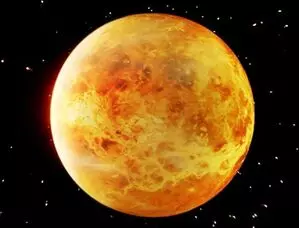
Study shows Venus once had Earth-like plate tectonics, essential for life
text_fieldsNew York: Venus, a planet often referred to as a scorching wasteland, may have once seen tectonic plate movements akin to those thought to have happened on early Earth, according to a study suggesting the planet might have supported life.
A group of scientists from Brown University demonstrated that plate tectonics had to exist on Venus at some point after the planet formed, roughly 4.5 billion to 3.5 billion years ago, using computer models and data from the planet's atmosphere.
This can account for the abundance of nitrogen and carbon dioxide present in Venus' atmosphere, they said, in a paper published in the journal Nature Astronomy.
The composition of the planet's current atmosphere and surface pressure would only have been possible as a result of an early form of plate tectonics -- a process critical to life that involves multiple continental plates pushing, pulling and sliding beneath one another.
On Earth, this process intensified over billions of years, forming new continents and mountains, and leading to chemical reactions that stabilised the planet's surface temperature, resulting in an environment more conducive to the development of life.
Venus, on the other hand, Earth's nearest neighbour and sister planet, went in the opposite direction and today has surface temperatures hot enough to melt lead.
One explanation is that the planet has always been thought to have what's known as a "stagnant lid," meaning its surface has only a single plate with minimal amounts of give, movement and gases being released into the atmosphere.
The team posts that this wasn't always the case. The paper suggests that this early tectonic movement, like on Earth, would have been limited in terms of the number of plates moving and how much they shifted.
It also would have been happening on Earth and Venus simultaneously.
"One of the big picture takeaways is that we very likely had two planets at the same time in the same solar system operating in a plate tectonic regime -- the same mode of tectonics that allowed for the life that we see on Earth today," said lead author Matt Weller, who led the study while a postdoctoral researcher at Brown and is now at the Lunar and Planetary Institute in Houston.
This bolsters the possibility of microbial life on ancient Venus and shows that at one point the two planets -- which are in the same solar neighbourhood, are about the same size, and have the same mass, density and volume -- were more alike than previously thought before diverging.
The study also highlights the possibility that plate tectonics on planets might just come down to timing -- and therefore, so may life itself. "We've so far thought about the tectonic state in terms of a binary: it's either true or it's false, and it's either true or false for the duration of the planet," said study co-author Alexander Evans, an assistant professor of Earth, environmental and planetary sciences at Brown.
"This shows that planets may transition in and out of different tectonic states and that this may actually be fairly common. Earth may be the outlier. This also means we might have planets that transition in and out of habitability rather than just being continuously habitable."
That concept will be important to consider as scientists look to understand nearby moons -- like Jupiter's Europa, which has shown proof of having Earth-like plate tectonics -- and distant exoplanets, the paper said.
With inputs from IANS























